I’ve been living in Bath for several years now, and although on the surface, it seems like a genteel little place, there is a darker side to the city – if you know where to look.
Bath straddles the River Avon in Wiltshire in the South West of England. Made famous by Jane Austen costume dramas, the city became a UNESCO World Heritage Site in 1987.
But beneath the charming streets, Roman baths, and Georgian grandeur lies a weird city. A strange Bath, a place haunted by Druids with Masonic symbols hidden in plain sight. Ley lines crackle with mysterious power along the same streets used by tour buses, and under these streets lie curses to ancient gods.
(1) Ancient curses in the Roman Baths
In the pre-Roman era, a hot spring existed in the area frequented by the local pagan population. Dedicated to Sul, the goddess of healing, the spring’s popularity drew the Romans’ attention. They combined Sul with their own goddess, Minerva, to create Sul Minerva. They built a temple to her and the resulting town became Aquae Sulis. It sounds idyllic, but excavations in the late 1970s revealed a darker side to the Romans in Bath.
Archaeologists uncovered around 130 thin sheets of metal in the waters of the King’s Bath. They turned out to be curse tablets rolled into tubes and dating back to the earliest centuries AD.
Curse tablets occur across the Greco-Roman world and they fall into two categories. One group takes the form of binding curses. These were ideal if you wanted to curse love rivals or sporting competitors. The Romans were asking the gods to take matters into their hands.
The second group involves asking the gods to mete out justice against thieves and the Bath tablets fall into this category. Some of them address Sulis Minerva as the guardian of the spring. The text asks her to persecute the guilty party until they return the stolen property. Many of the tablets refer to small items stolen at the baths.
It gives a whole new insight into the people frequenting the Roman Baths in their ancient heyday.
(2) Druids, The Circus, and the Freemasons
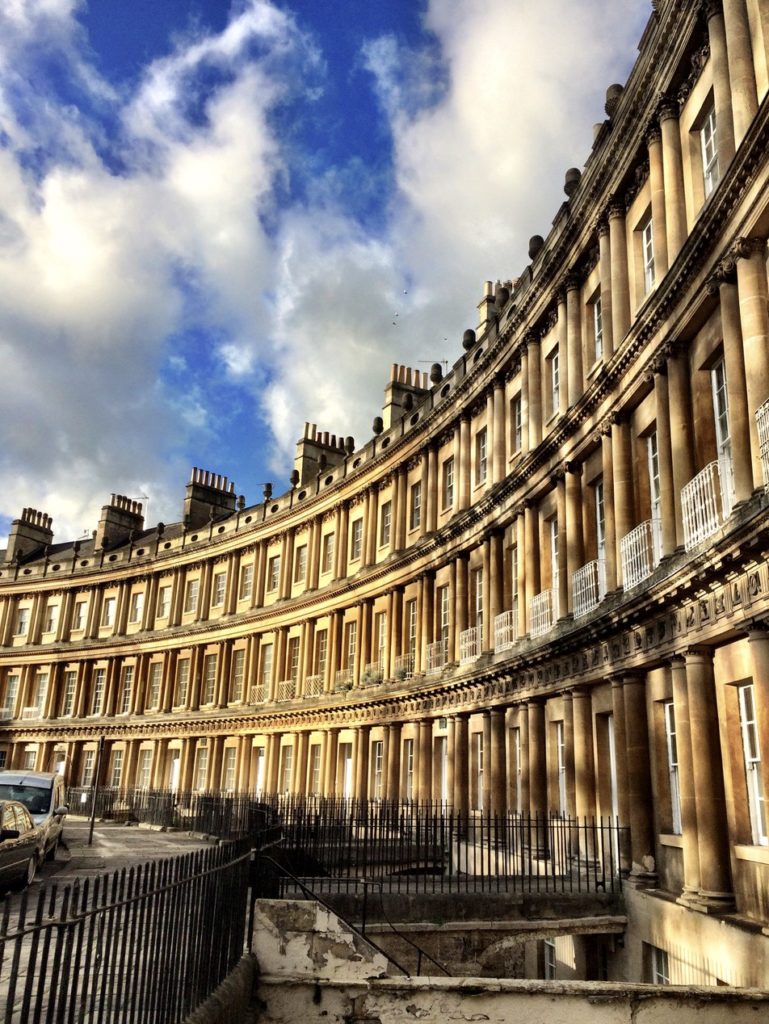
The Circus is a gorgeous, circular Georgian terrace with three layers of classical columns. Five enormous plane trees stand in the central garden, blocking the view of the buildings and it’s really hard to get a picture of the curved facade. I walk through The Circus almost every day, so it’s a place I have come to love. When I wrote Map of Shadows, which opens in Bath, I started to research the area and found it has an incredible background.
Inspired by Bath’s alleged druid past, architect John Wood the Elder designed the Circus by modelling its dimensions on Stonehenge. The outer circumference matches the ancient Druid standing stones, as well as incorporating the pagan circle and crescent of The Circus and The Royal Crescent just along the street.
Freemasonry was used in the design. The layout of The Circus, Gay Street and Queen Square form a key, a common symbol in Freemasonry, representing power or hidden secrets. There are over 500 carved emblems along the frieze of the columns, including serpents, stone tablets of the 10 commandments, lightning bolts, and more.
According to legend, a ley line connects Bath Abbey and The Circus, cutting along Brock Street. If that’s true, it makes The Circus the heart of strange Bath, and it plays an important part in my story, Map of Shadows.
(3) A pagan god in the Botanic Gardens
The Botanic Gardens are fantastic to visit in any season, with its ever-changing landscape of trees, flowers, fat pigeons and cheeky squirrels. I walk there several times a week and enjoy watching the seasons pass.

But there is one strange object in the gardens – a huge pagan deity carved from a tree.
William Lobb brought twelve Giant Redwoods to the UK in the 1850s. One of them ended up in Bath’s Botanic Gardens and it died after contracting Honey Fungus. In 2001, the council commissioned a local artist to create a piece celebrating its life. Lee Dickson created the chainsaw sculpture that stands near the Dovecote. The 7m-tall Mankind’s Hand in Nature preserves what’s left of the redwood. It helps to celebrate the Druid roots of the city.
(4) Literary inspiration and Gothic horror
Jane Austen is Bath’s most famous literary inhabitant. She lived in the city between 1800 and 1809. But many overlook the short presence of an even greater writing resident – Mary Shelley.
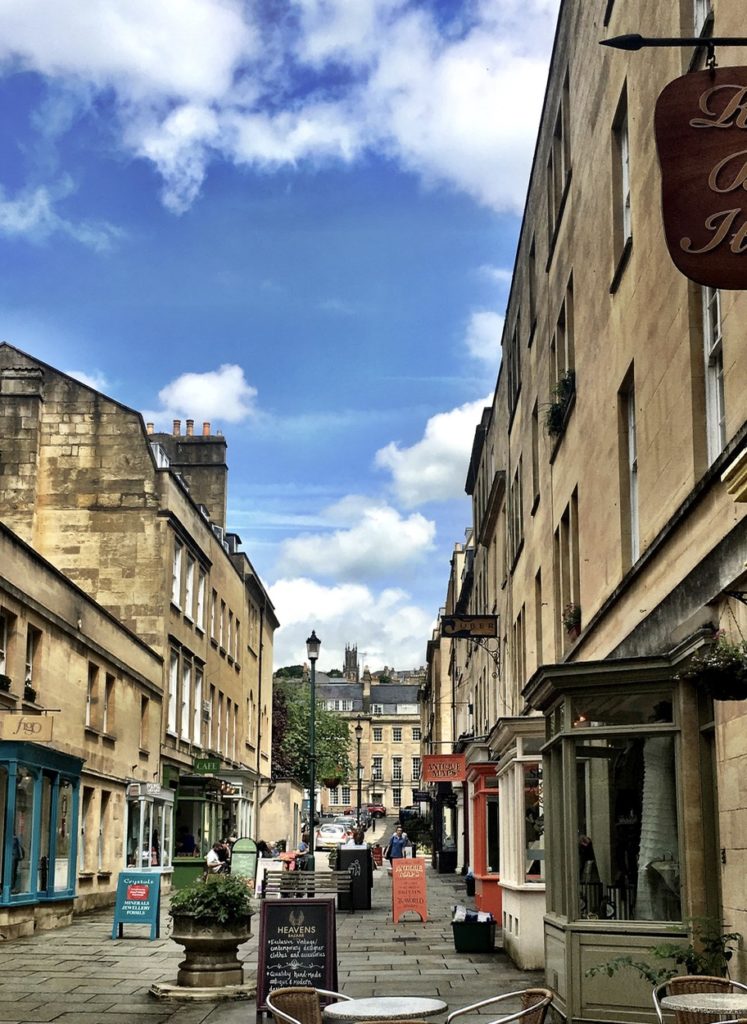
She came up with the idea of Frankenstein and his monster during the infamous evening at the Villa Diodati. Later in 1816, the writer arrived in Bath with Percy Shelley and took rooms at 5 Abbey Churchyard (now long gone) and 12 New Bond Street. When they left the city five months later, she’d finished the first volume of the novel that would make her famous.
Shelley may have given birth to Frankenstein in Switzerland, but she brought him up in strange Bath.
Charles Dickens also paid frequent visits to the city. He stayed at the Saracen’s Head on a visit in 1835. Rumour has it that Dickens created The Old Curiosity Shop’s Little Nell during a stay in St James’ Square in 1840. Bath’s nineteenth-century social life appears in The Pickwick Papers.
(5) Angels and the dead at Bath Abbey
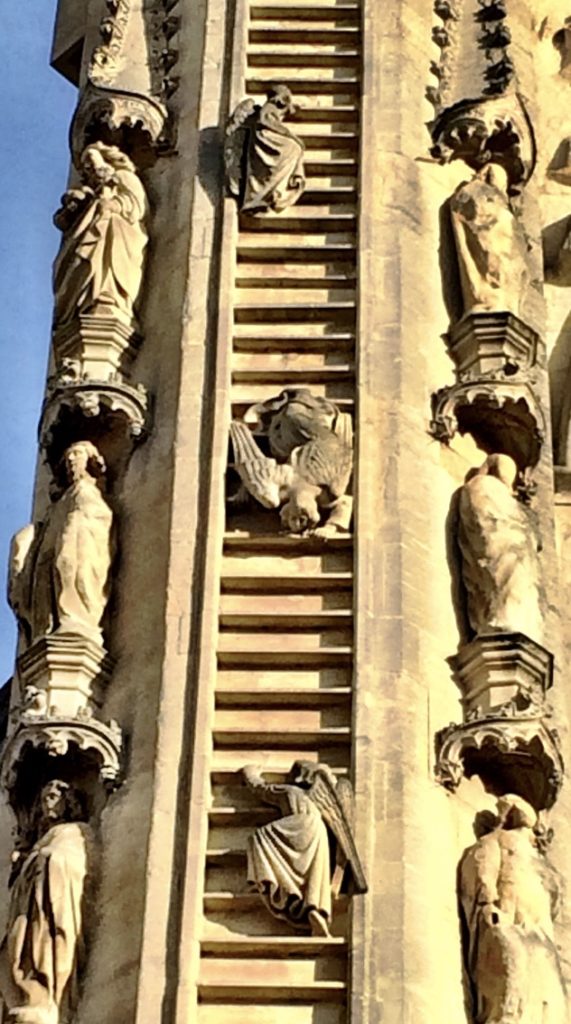
The most arresting view of Bath Abbey comes at the grand West facade where angels climb stone ladders alongside the stained-glass windows, a gorgeous carved entrance doorway, and carved figures from Biblical history.
According to abbey legends, Bishop Oliver King dreamed of angels climbing to heaven in the early 1500s, and although Jacob’s Ladder is a common enough motif on cathedrals, if you stand beneath the angels, you’ll see some are climbing down. Are they angels – or demons?
In 2011, excavations revealed the bodies of around 6000 people beneath the floor of the abbey. Interred at the abbey until the mid-19th century, the burials stopped when they ran out of space. As the corpses decomposed, they caused voids under the stone slabs. Work is underway to repair the floor before it collapses.
(6) Ghost signs preserve Bath’s literary heritage
Ghost signs are the remnants of old advertisements painted onto walls. Sometimes the signs are legible, reminding passersby of long-gone products or local businesses. In places, you can see several signs painted one on top of another.
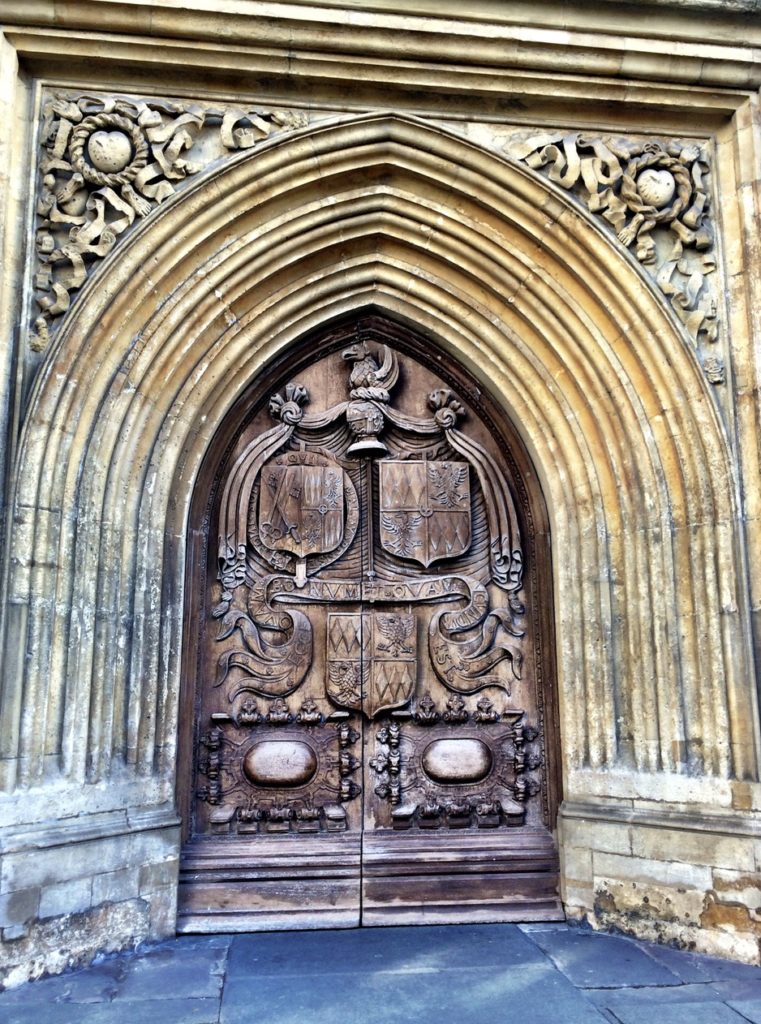
On Milsom Street, a building bears the ghost sign of the Circulating Library and Reading Room. The sign dates to the early 1820s and Sébastien Ardouin notes Frederick Joseph ran a bookshop at no. 43 – the building bearing the sign.
Circulating libraries found popularity in the 18th century due to the cost of books. Booksellers founded them to lend copies of the books to earn extra income. Members paid a subscription fee to borrow one or two books at a time. They were much like an early literary version of Netflix.
(7) Kennet and Avon Canal
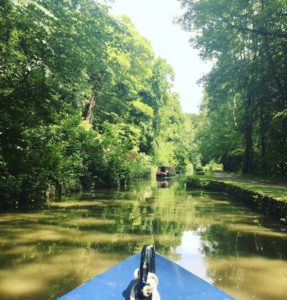
The Kennet and Avon Canal stretches for 140km, linking the River Avon and the River Kennet. Built between 1794 and 1810, the canal fell into disrepair after the Great Western Railway opened. Volunteers restored the canal which reopened in 1990, and I walk along it several times a month. It’s one of my favorite walks, and one of the characters in Map of Shadows, Mila, lives on a canal boat.
The canal is now a popular destination for boating and it’s an important site for wildlife. But we’re interested in strange Bath, so if ghosts are your thing, head to the Cross Guns pub in Avoncliff. You can see the canal’s aqueduct from the gardens.
Reports tell of a Blue Lady in the women’s toilets, though she appears elsewhere. She dresses in Victorian fashions and looks down to the river. Witnesses describe feelings of being watched and a sudden drop in temperature before she appears. Staff see shadows in the kitchen while patrons also see an old man in the bar. The figure of a monk sometimes appears near a fireplace in the lounge where there is a priest hole.
So, if you visit Bath, be sure to look beneath the tourist facade to the dark side beneath …


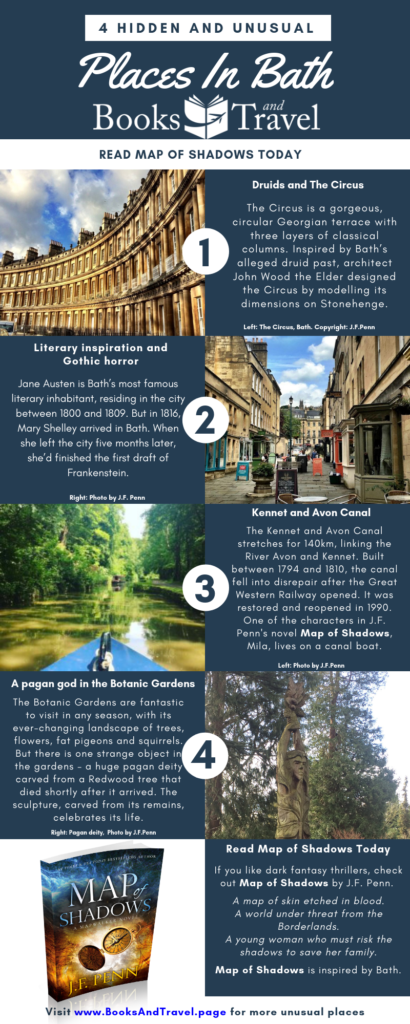
Fascinating.
Thank you, I’ve been looking for info like this. It’s becoming a little obsession.